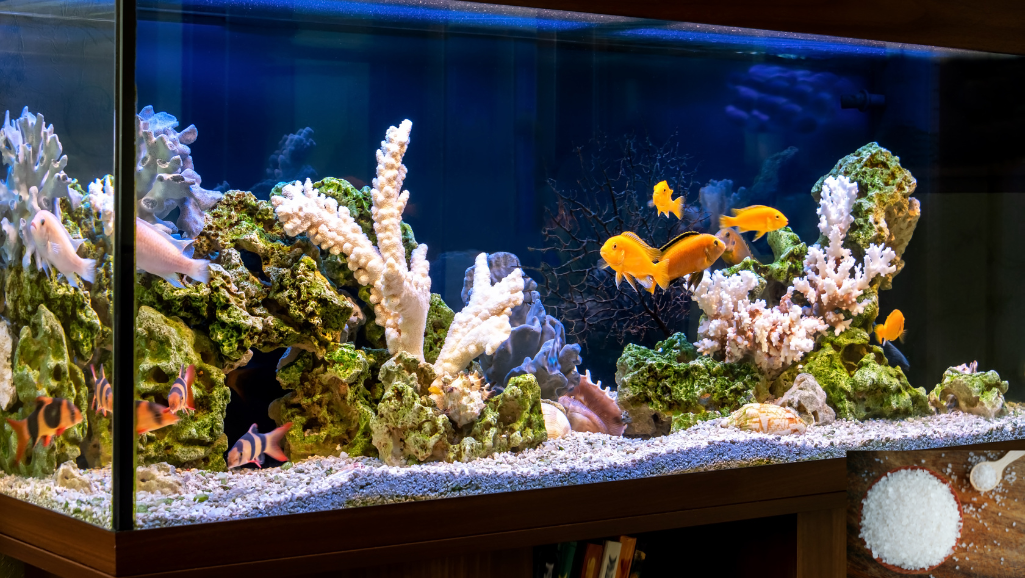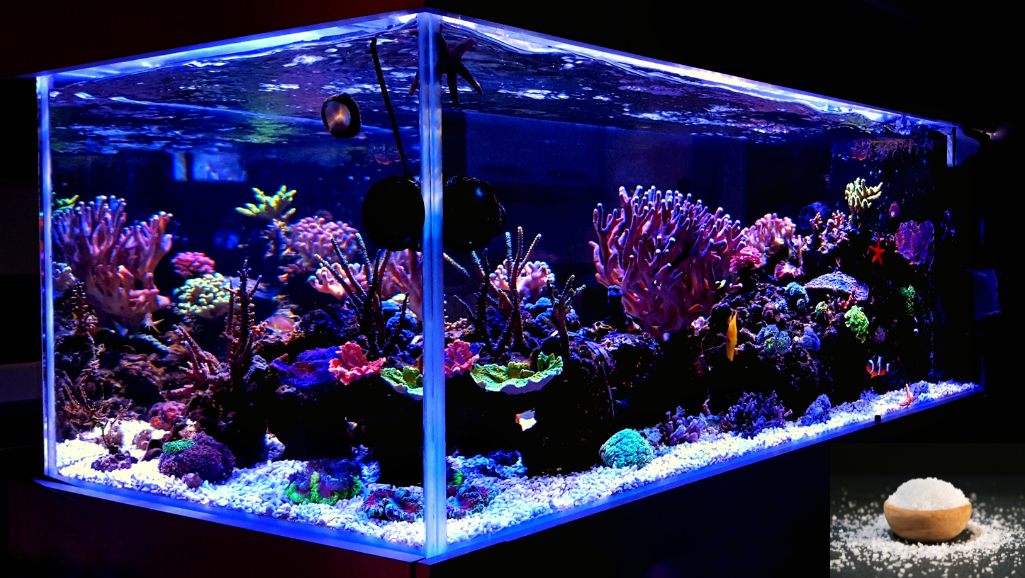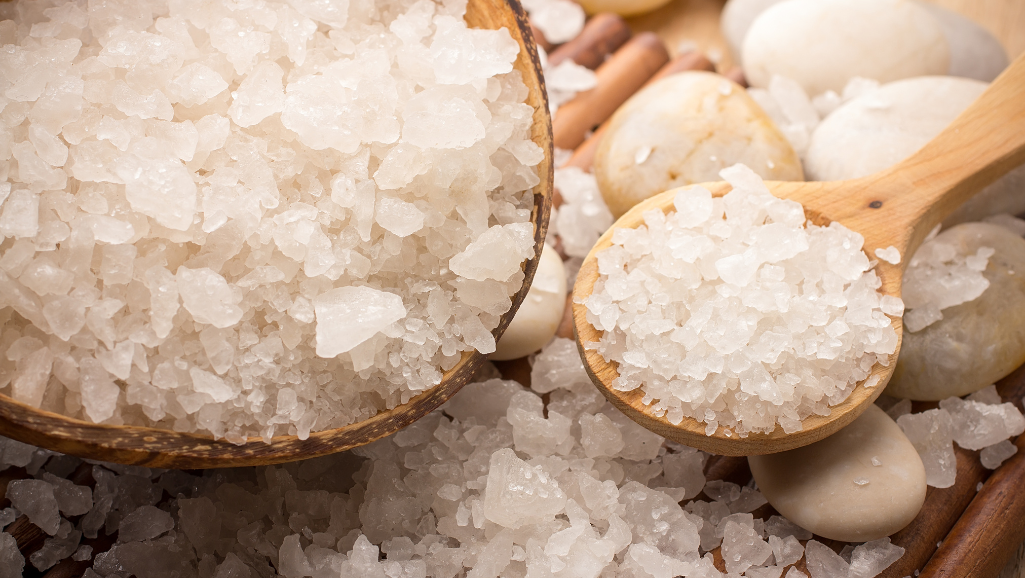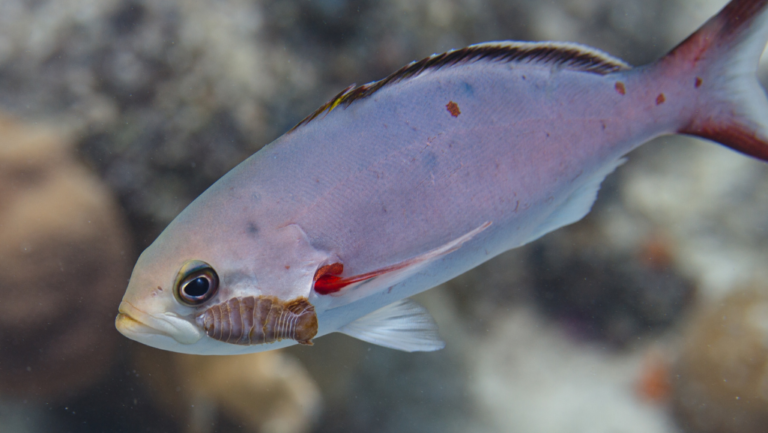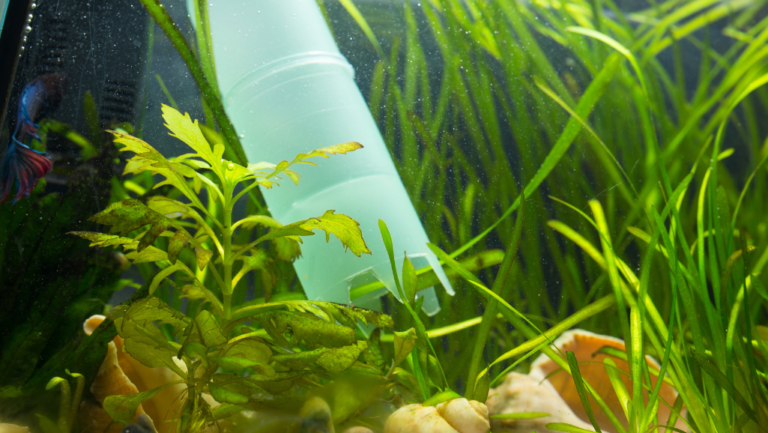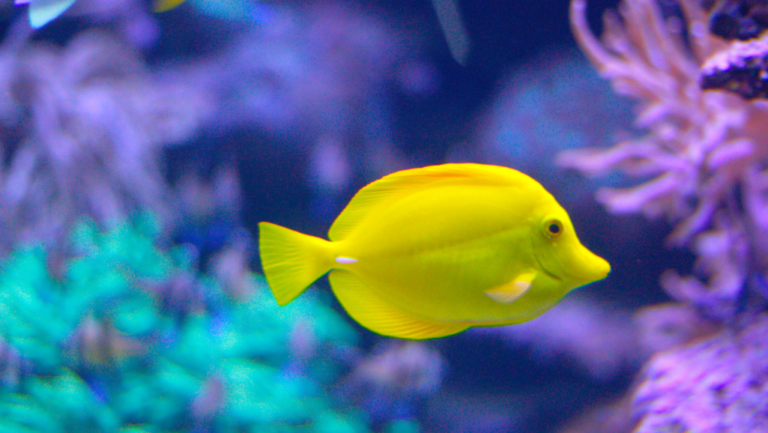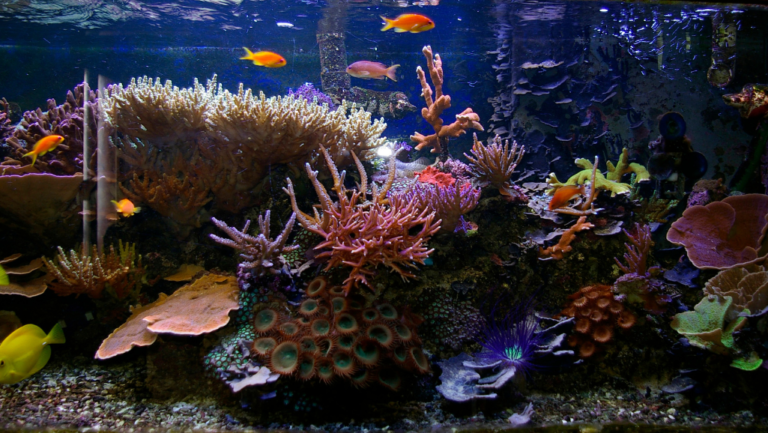If you’re into aquariums, you might face health problems with your fish. An Epsom salt bath can help with many issues. It’s a natural way to keep your fish healthy.
Using Epsom salt to treat fish disease is all about the right amount and how you use it. An Epsom salt bath is a great tool for keeping your fish healthy and happy.
Key Takeaways
- Epsom Salt Bath for Fish effectively treat common health issues in aquarium fish
- Epsom salt, or magnesium sulfate, provides numerous benefits for fish health
- Proper dosage and administration techniques are key for successful treatment
- Aquarium salt baths can help alleviate ailments and promote overall fish well-being
- Treating fish disease with Epsom salt requires understanding the process and precautions
What is Epsom Salt and Its Benefits for Fish?
Epsom salt, also known as magnesium sulfate, is a natural mineral compound. It’s popular among aquarium fans for its health benefits for fish. Unlike regular aquarium salt, Epsom salt has magnesium and sulfate ions. These ions are key for fish’s bodily functions.
When mixed with water, Epsom salt releases magnesium and sulfate ions. Fish can absorb these ions through their gills and skin. These ions help with fluid balance, muscle and nerve function, and the immune system. So, Epsom salt keeps fish healthy by maintaining the right levels of magnesium and sulfate in the water.
Understanding Epsom Salt’s Composition
Epsom salt’s formula is MgSO4·7H2O. It’s made of magnesium, sulfur, oxygen, and seven water molecules. This makes it different from other aquarium salts. The magnesium and sulfate in Epsom salt are vital for fish’s metabolism.
One big epsom salt benefit for fish is helping with osmoregulation. Magnesium helps fish manage water balance. Sulfate aids in detoxifying harmful substances from the fish’s body.
How Epsom Salt Affects Fish Health
Epsom salt can greatly improve fish health when used as a fish tank salt treatment. Here are some ways it helps:
- Stress reduction: Epsom salt makes the environment more stable, reducing stress in fish. Stressed fish are more likely to get sick.
- Healing support: Epsom salt provides minerals for healing injuries or infections. It also reduces inflammation and swelling, helping fish recover faster.
- Parasite control: Epsom salt baths can treat external parasites like ich and velvet. The salt makes it hard for parasites to survive on fish.
“Epsom salt is a versatile and natural remedy that can greatly improve the health and well-being of your aquarium fish. Its unique composition and beneficial properties make it a valuable tool in every aquarist’s arsenal.”
Knowing about Epsom salt’s composition and benefits helps aquarium owners make better choices. It can be a regular supplement or a treatment for specific issues. Epsom salt can greatly improve your fish’s health and energy.
Common Ailments Treated with Epsom Salt Baths
Aquarium fish face many health problems, just like pets. Epsom salt baths are a great way to treat several common issues. Knowing how epsom salt helps can ensure your fish stay healthy and happy.
Constipation in Fish
Constipation is a big problem for fish, often due to bad diet or too much food. Signs include not wanting to eat, a big belly, and trouble going to the bathroom. Epsom salt for fish constipation works well. It relaxes the fish’s digestive muscles, helping waste move out.
Swim Bladder Disorders
Swim bladder issues make fish swim weirdly, like upside down. This can happen for many reasons, like constipation or injuries. Epsom salt for fish swim bladder problems can help. It reduces swelling and helps with digestion.
“Epsom salt baths are a favorite treatment for many fish keepers. It’s great for reducing swelling and helping fish heal.” – Dr. Emily Roberts, Veterinarian
External Parasites
Parasites like ich and velvet bother fish a lot. They stick to the fish’s skin and fins, causing trouble. Epsom salt baths can get rid of these pests. The salt also helps the fish’s slime coat, keeping them safe from more parasites.
Before giving your fish an epsom salt bath, watch them closely. Look for signs like:
- Lethargy and loss of appetite
- Swelling of the belly or eyes
- Difficulty swimming or maintaining proper buoyancy
- Visible parasites or abnormal growths on the skin or fins
Spotting these signs early and using an epsom salt bath can help your fish get better. This keeps your aquarium a happy place for your fish.
Preparing an Epsom Salt Bath for Your Fish
An Epsom salt bath can help treat health issues in aquarium fish. To get the best results, you need to prepare it right. This means picking the right aquarium, figuring out the epsom salt dosage for aquarium fish, and keeping the water at the right temperature.
Selecting the Right Aquarium
Use a separate aquarium or container for the Epsom salt bath. This keeps the main tank’s water chemistry safe. Make sure the treatment tank is big enough for your fish to swim without stress.
Dosage Guidelines for Epsom Salt
The best epsom salt brand for aquarium use is pure, unscented Epsom salt. The amount you use depends on how sick your fish are and the tank size. Start with 1 tablespoon of Epsom salt per gallon for mild cases. For more serious issues, you might need up to 3 tablespoons per gallon. Always begin with a small amount and add more if needed.
It’s essential to dissolve the Epsom salt completely in a separate container of aquarium water before adding it to the treatment tank to avoid stressing your fish.
Water Temperature Considerations
Keep the water temperature in the Epsom salt bath close to your main aquarium’s. Big changes in temperature can stress your fish. This can make them sicker and slow down their healing. Use an aquarium thermometer to keep the temperature steady during treatment.
Step-by-Step Guide to Administering the Bath
Giving your fish an Epsom salt bath is easy if you do it right. It’s important to follow a guide and have the right tools.
Equipment Needed for the Process
Before starting, make sure you have these items:
- A separate container large enough to accommodate your fish comfortably
- Epsom salt (pure magnesium sulfate)
- An air stone or air pump to provide oxygenation
- A thermometer to ensure the water temperature matches your main aquarium
- A net or cup to gently transfer your fish
Monitoring Fish During the Treatment
Keep a close eye on your fish in the Epsom salt bath. Look for signs of stress like rapid breathing or erratic swimming. If you see any worrying signs, take your fish out of the bath and back to their home.
Remember, each fish may react differently to the treatment, so personalized observation is key.
Duration of the Bath Treatment
The bath’s length depends on your fish’s condition and how they react. Here’s a general guide:
- For minor issues, such as constipation, a 15-30 minute bath may suffice
- For more severe cases, like swim bladder disorders, a 30-minute to 1-hour bath may be necessary
- For external parasites, a series of shorter baths over a few days may be most effective
“The key to a successful Epsom salt bath is patience and attentiveness. Monitor your fish closely and trust your instincts – you know your aquatic friend best.”
By following these steps and using the right tools, you can safely give your fish an Epsom salt bath. This can help with many health problems and keep them healthy.
Potential Risks and Precautions
Epsom salt baths can help fish with many ailments. But, it’s important to know the risks and take precautions. Overdosing, bad reactions, and keeping sick fish separate are key.
Overdosing on Epsom Salt
One big risk is using too much epsom salt. Too much can harm or even kill fish. Always follow the right amount based on your tank size and fish type. A good rule is 1 tablespoon of epsom salt per gallon of water.
“Moderation is key when it comes to epsom salt baths. Too much of a good thing can quickly turn into a disaster for your aquatic pets.”
Identifying Adverse Reactions
Watch your fish closely during an epsom salt bath for fish. Look for signs like fast breathing, odd swimming, or too much mucus. If you see these, take the fish out and back to their tank. For serious issues, see a fish vet.
Importance of Isolating Affected Fish
Keep sick fish away from others in your tank. This stops disease spread and keeps healthy fish calm. Use a separate tank with the right water and filters for treatment.
Remember, prevention is always better than cure. Keep water clean, feed well, and watch for illness signs. This can cut down on the need for treatments like epsom salt baths.
When to Seek Professional Help
Treating fish disease with epsom salt can help with minor issues. But, knowing when to get professional help is key. As a fish owner, watch for signs of serious health problems that epsom salt can’t fix.
- Severe bloating or swelling
- Persistent loss of appetite
- Rapid weight loss
- Difficulty breathing or gasping at the surface
- Visible wounds or ulcers on the body
- Extreme lethargy or unresponsiveness
If you see these signs, get help fast. A fish vet can find the problem and suggest treatments beyond epsom salt.
Recognizing Serious Health Issues
Epsom salt baths help with minor problems like constipation or swim bladder issues. But, for serious conditions like bacterial infections or parasitic infestations, you need special meds from a vet.
“When in doubt, always consult with a professional. Your fish’s well-being should be your top priority, and seeking expert advice can make all the difference in their recovery.”
Consulting with a Veterinarian Specializing in Fish
Find a vet in your area who knows fish diseases. They can diagnose and treat complex issues. They’ll also tell you how to use meds and prevent future problems.
“A skilled veterinarian is an invaluable ally in ensuring the health and happiness of your aquatic companions. Don’t hesitate to reach out for help when your fish’s well-being is at stake.”
While epsom salt is useful, it’s not a cure-all. Stay alert, recognize serious symptoms, and get help when needed. This way, your fish can live a long, healthy life.
Alternative Treatments for Fish Health Issues
Epsom salt baths can help with many fish health problems. But, there are other options too. Herbal remedies and commercial fish medications can also treat various issues. It’s important to know the pros and cons of these alternatives compared to fish tank salt treatment.
Herbal Remedies
Herbal remedies are popular for treating fish health issues naturally. Some herbs used include:
- Echinacea: Boosts the immune system, helping fish fight infections and stay healthy.
- Garlic: Fights off external parasites and bacterial infections with its antimicrobial and antiparasitic properties.
- Aloe vera: Soothes skin irritations and helps heal injuries or ulcers in fish.
It’s key to research the right dosage and how to use herbal remedies to keep your fish safe.
Commercial Fish Medications
Pet stores and online shops sell many fish medications. These products target specific health problems, such as:
- Antibiotics: Treats bacterial infections like fin rot or ulcers.
- Antifungal medications: Stops fungal growths, like cotton wool disease.
- Antiparasitic treatments: Eliminates external parasites, like ich or velvet.
Always follow the instructions on commercial fish medications carefully. If unsure, talk to a fish veterinarian.
While alternative treatments can work, they shouldn’t replace good aquarium care. Regular water changes, proper filtration, and a balanced diet are key. They help keep your fish healthy and prevent the need for medical treatments.
Maintaining Overall Fish Health
Epsom salt baths can help with some fish ailments. But, it’s key to keep your fish healthy overall. This means good food and a clean tank. A healthy tank means less need for treatments.
The Role of Proper Nutrition
Fish, like us, need a balanced diet. Good food helps them grow and stay healthy. When picking food, look for these things:
- Choose a reputable brand that offers a variety of nutrients
- Opt for food specific to your fish species
- Provide a mix of dried, frozen, and live foods for dietary diversity
- Avoid overfeeding, as excess food can lead to water quality issues
Good food helps your fish fight off diseases. This means less need for treatments like epsom salt baths.
Importance of Regular Aquarium Maintenance
A clean tank is vital for your fish’s health. Regular care keeps the water clean and safe. Important tasks include:
- Performing frequent water changes to remove waste and replenish essential minerals
- Cleaning the filter media to ensure efficient mechanical and biological filtration
- Monitoring water parameters, such as temperature, pH, ammonia, nitrite, and nitrate levels
- Removing uneaten food and debris to prevent decomposition and water quality issues
A well-maintained aquarium is the foundation of a healthy fish community.
Regular tank care lowers disease risk and treatment needs. Remember, prevention is always better than cure for your fish.
Conclusion: Epsom Salt Baths as a Viable Treatment Option
Epsom salt baths are a good way to treat common fish problems like constipation and swim bladder issues. They also help fight off external parasites. By following the right dosage and how to use it, fish owners can help their pets feel better naturally.
Summarizing Benefits and Best Practices
It’s important to stick to the recommended amount of Epsom salt and watch your fish closely during treatment. This helps them get the most benefits without any harm. Keeping the water at the right temperature and treating in a separate tank also helps a lot.
Encouragement for Responsible Aquarium Care
Epsom salt baths are helpful, but taking care of your fish’s overall health is key. Make sure they eat well and keep their home clean. If you need help, don’t hesitate to ask a professional. This way, your fish will stay happy and healthy for a long time.

